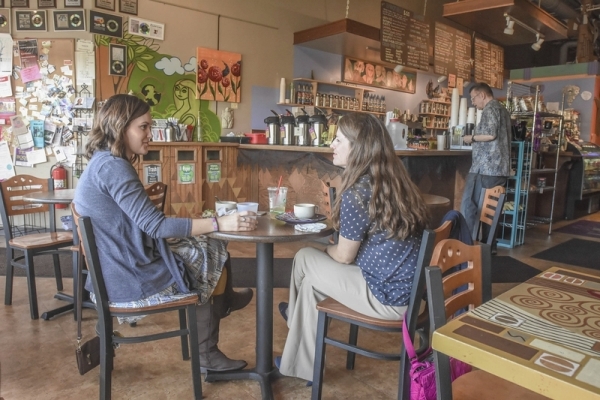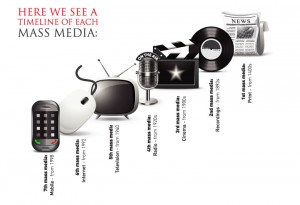
by Scott Howard | Sep 5, 2017 | Marketing and Advertising Insights, ScLoHo's Fort Wayne, ScLoHo's Media, The Not-So-Secret Writings of ScLoHo, WOWO Fort Wayne Radio Advertising with Scott Howard
Where do you get your local news? Is traditional media dead yet?
These two questions have been on my mind for quite awhile and then last month we learned that a Fort Wayne news institution was making a major change:
The News-Sentinel is ending distribution of its afternoon newspaper as it shifts to a digital platform, Fort Wayne Newspapers announced.
Subscribers will still be offered News-Sentinel content in the morning Journal Gazette, as part of a renewal of the two newspapers’ joint operating agreement.
I wasn’t surprised, but I was saddened. In my youth, I was a paperboy of the afternoon paper in Fort Wayne and had a fondness for the paper even though it has been years since I bought one.
The survival of two local daily newspapers in a city the size of Fort Wayne was only due to some planning decades ago that allowed the morning and afternoon newspapers that were independently owned to form a Joint Operating Agreement. This J.O.A. was limited to advertising revenue and kept the news and editorial staffs separate for each paper.
For the past dozen years, I have had access to publication numbers of the two newspapers because of my affiliation with the Radio Advertising Bureau and their access to the numbers reported to the Audit Bureau of Circulations that keeps track of this data.
In 1999, the afternoon paper had over 45,000 subscribers, and that number was in the 20 thousand range 10 years later. The last report I have access to listed a total of 12,000 weekly subscribers to the News-Sentinel back in 2014 and odds are they were less than 10 thousand last week.
This is not just a local phenomenon. The decline of printed daily newspaper circulation has been going on for decades with alternatives popping up online. Many papers moved their content online and used those numbers to boost their subscription numbers that they would report, but the revenue didn’t match up.
A few years ago, I had coffee with a young woman who was in charge of selling digital advertising for the Fort Wayne Newspapers and I remember my advice:
Your job is going to be to keep advertisers spending levels where they are today. The businesses are going to decrease their spending in the printed paper and you can help them stay by migrating those funds into digital products.
I laid out a 5 year plan and at the end of those 5 years, 90% of an advertisers budget was being spent in digital media with the remaining 10% on a souvenir collectors edition of the printed newspaper. She wasn’t allowed to follow my advice and now she works elsewhere.
A couple years later, after I was interviewed to become the Digital Advertising Sales Manager for the Fort Wayne Newspapers they decided to eliminate the position and combine the sales departments of both digital and print.
So where do we as consumers get our news? I still see people reading the morning paper in Fort Wayne on the days I visit a coffee shop. But those numbers have been declining too.
Fort Wayne has over 20 radio stations and a number of TV stations. The television stations that offer local news include a CBS, ABC, NBC and Fox affiliate. According to the ratings, the CBS station has double the audience for local news over the ABC station and the NBC stations audience didn’t hardly register in the latest survey. The Fox station has one newscast at a time that no one else does (10 pm).
On the radio side, WOWO Radio is the only station with a fully staffed full time news staff that does live local news every 30 minutes from 5am until 6pm weekdays, and more frequently between 5 and 9am. Yes, there are other stations that offer local news, but not all day and not to the degree that WOWO does. WOWO has additional news sources and providers in neighboring communities from our co-owned stations in Warsaw, Elkhart, South Bend and Goshen along with “news-partners” at local print and TV stations.
Long ago, WOWO’s news slogan was, “Where you go when you need to know”, and as a News Talk formatted radio station for over 20 years, the commitment remains. WOWO recognized that where we get out news continues to evolve. Nearly every local news story is found on WOWO.com.
News and Weather alerts are sent via text to subscribers. Updates on Facebook and Twitter are posted online too. WOWO is owned by Federated Media and WOWO supplies the news to our sister stations in Fort Wayne including WMEE, 98.9 The Bear & K-105.
Having worked for a couple of the other radio station groups, they simply don’t have a news department like WOWO & Federated Media. When I was there, it was more like grab the morning newspaper and pull a couple of headlines to rewrite and call it a newscast, style of news. And to be fair, there are two radio stations on the non-profit part of the FM dial that have news departments of varying degrees.
News is not the only reason we have traditional media. My original two questions when I started this were:
Where do you get your local news? Is traditional media dead yet?
Individual TV shows on the major broadcast networks can still find a healthy sized audience, but those networks are not filling all their prime time weekly slots with new shows. Lot’s of repeats will air on Friday and Saturday nights, I’ve observed. Broadcast TV is trying to adjust to the on-demand world of entertainment we have now.
Music radio stations have been battling alternatives for decades and usually are still winning if they are locally connected to their listeners and their community. The Radio Advertising Bureau still tells us that over 90% of folks age 13 and older listen to a radio station every week.
From a business standpoint, you as a business person need to understand that there are still some very valuable traditional media sources that you can use to advertise with. It’s just not the same as it was 30 years ago or even 10 years ago and it may require someone to help guide you to make smart decisions on where to advertise.
That’s where I can help. I make recommendations beyond what I can sell to you myself, when I see an opportunity that you should take advantage of. Want help? Let’s talk.

by Scott Howard | May 16, 2017 | Marketing and Advertising Insights, ScLoHo's Collective Wisdom, ScLoHo's Media, ScLoHo's Web World, The Not-So-Secret Writings of ScLoHo, WOWO Fort Wayne Radio Advertising with Scott Howard
Yesterday I was reading an article from MarketingCharts.com so you don’t have to, no, really I do enjoy looking at this kind of stuff and pulling out some of the highlights.
It relates to an upcoming podcast episode and article I wrote that will be debuting in a couple days, too.
Here’s the highlights:
- We are spending more time with “Media” than ever before. Over 12 hours a day. Technically this would have been impossible a few years ago, but not now. Which brings us to the second highlight:
- Multi-tasking is in full swing and for media that means watching more than one screen at the same time. Those smartphones are being used by more and more of us instead of staring at the TV screen like zombies when the commercials come on.
- Print Media is shrinking. Not just the number of pages or the number of readers, but the time spent reading newspapers and magazines by each person is dropping. Over the last 5 years, each of us who still read print spend 15 minutes less every day.
- Radio listening, according to the report is steady. More on this in a second.
- Time spent with Digital media continues to grow. No surprise to any of us right?
Those last two items, Radio and Digital are the two areas that I work in and can help you craft an effective plan to use radio and digital to grow your business. Want to know more? Ask me. Also check out this weeks Genuine ScLoHo Media & Marketing Podcast episode Thursday on this website. Here’s a link.
by Scott Howard | Dec 5, 2016 | Marketing and Advertising Insights, ScLoHo's Media, The Not-So-Secret Writings of ScLoHo
So really…Is Traditional Media Dead?
I’m going to look at this subject from a marketers perspective. And a consumers viewpoint. And focus on just one piece of the traditional media, daily newspapers.
Lots of businesses rely on traditional media and advertising options that have been the mainstay for decades. Radio, television, yellow pages, magazines and newspapers were the big ones.
Every one would get a phone book that included a yellow page section that businesses would pay for ad space so you and I as consumers could find a plumber or lawyer or whatever we needed that we didn’t already have.
The internet replaced the relevancy of the printed yellow pages as cellphones replaced land lines and printed phone books that were updated months in advance and published once a year became obsolete.
(I’m still listed in the printed phone book white pages with an address that I moved from 11 years ago and a phone number I disconnected 3 years ago.)
But let’s focus a second on the other printed form of advertising that is updated nearly every day.
Your local newspaper. A decade ago I predicted the death of their business model at the same time our local papers built a new multi-million dollar press and building. It was a stupid idea, but it didn’t kill the paper.
Last month a friend of mine who comes into the Firefly Coffee Shop everyday to do crosswords and drink a Venti cup of coffee told me he is in the Sunday newspaper. Jim is his name and Jim is in his 70’s. He told me that his picture was in the business section.
While Jim was looking around the coffee shop for a copy of the Journal-Gazette Business section to show me the picture of him, I sat at my laptop and found it and the story.

Jim was surprised that I could find nearly any story from the printed copy of the newspaper on their website. Here’s the irony:
Jim did not read the story in the newspaper and so he did not know the context of the picture except the picture was of two women and he was in the background. The headline read: Youth also flavor local java scene and it was about the increase of millennials visiting coffee shops.
As both technology changes and generations age, there is a shift in the way the public consumes media and gathers information. Many newspapers allow you to read a limited number of articles online free but the goal is to have you pay with an online subscription.
The newspaper business model is broken and attempts to fix it appear futile. The company I work for, Federated Media sold off the one newspaper they owned this year because it was not profitable. At least compared to the other media assets under the company umbrella. Without my personally speaking to the Dillie family that owns our company, I still know that the newspaper was a prized piece of the portfolio of media interests, and the sale of the paper was strictly a business move that they wished they didn’t have to do.
Mediapost shared some stats about newspaper revenues that include:
Gannett reported an 11.7% year-on-year drop in its third-quarter ad revenues and a 6.4% drop in its circulation revenues
Print advertising revenues for the three months that ended on September 25 fell 14.8%, led by a 35.1% reduction in national print advertising and a 19.1% reduction in preprints.
On the positive side, they shared this:
Digital advertising revenues were up 6.2%, compared to the quarter a year ago, Digital-only subscriptions grew 45%.
However:
Gannett plans to lay off roughly 350 employees, or around 2% of its total workforce of about 18,700.
Gannett, which is the nation’s largest newspaper publisher, with a portfolio that includes USA Today and more than 100 local publications
Layoff announcements like this are not new. They are continuous. These are not like the old layoff announcements companies used to make about temporary layoffs. These jobs are not coming back.
The online version of newspapers is not capable of supporting financially the printed version.
The short story on these and other numbers is that the newspaper business is still trying to stay alive but when they finally do find a formula that makes it possible to survive financially, it will be a tiny fragment of what we have now in 2016. And what we have now in 2016 is a fragment of what the newspaper industry was 20 years ago.
As a consumer, I don’t need the printed paper to stay informed. If the online version goes away, we’ll have other online news sources that don’t have the burden of overhead.
As an advertiser, the number of print readers I reach by ads in the newspaper will continue to grow old and die. I went to a funeral of a 95 year old this fall so we may be living longer, but like my friend Jim who is in his 70’s and his picture is in the paper, it doesn’t matter anymore.
Thoughts? Questions? Comments? Let’s talk.
by Scott Howard | Mar 21, 2016 | Marketing and Advertising Insights, ScLoHo's Media, ScLoHo's Web World, The Not-So-Secret Writings of ScLoHo, WOWO Fort Wayne Radio Advertising with Scott Howard
It’s a fascinating discussion when I ask people about their media habits in 2016. A lot has changed over the years with more options than ever and sometimes people ask me a variation of this question,
Is Mass Media Dead or Thriving?
It is actually thriving but in ways different than before.
Mass Media by definition is considered a form of media that is consumed by a large number of people. While that definition hasn’t changed in the past 100 years, the way that media is delivered and consumed has changed over the past 25 years.
For my purposes today, I’m going to address this from a marketing standpoint.
While we have seen the decline of newspapers and magazines, those that have survived have done so by reinventing themselves to appeal to a niche audience. It’s doubtful that we’ll ever have the dominance of a major print publication, even on the local level except where there are no other media options available. But then there’s the internet…
Television was dominated by ABC, CBS, NBC and then PBS and Fox came along to provide a few more viewing options. Unless you recorded a show on your own, you had to watch it live. This was an excellent way for advertisers to reach a bunch of people simultaneously with their commercials as we sat “glued to the tube”. Then with the expansion of networks and the ability to time shift and watch what ever we wanted, when ever we wanted, the simultaneous viewing of commercials began declining. But then there’s the internet…
Radio stations that play music have always had competition. As consumers we could buy the music and listen when ever we wanted to what ever we wanted. Music radio stations have always had competition for music listenership that went beyond other radio stations. Then with the expansion of choices including the internet…
Talk Radio stations have had a mix bag of competition. When I first started listening to WJR and WWJ in Detroit 30 years ago, I tuned it for information. Some talk stations don’t offer the information that listeners want and they have lost listeners because their are plenty of options including the internet…
As a side note, I looked at the listenership of the Fort Wayne radio stations and 4 of the top 5 stations have incredibly large audiences of over 100,000 weekly listeners. That’s 20% to 30% of the population, each of those stations reaches individually. WOWO, my station, and 3 of our sister stations that play music are in that top 5, out of over 25 stations in the Fort Wayne metro area.
The concept of Mass Media has changed. When there were fewer options, each option had more people reading/listening/viewing. Now we have the ability to personalize our media habits as consumers and as marketers.
I don’t need a newspaper subscription to read the local news. I can get the information online. I don’t need to watch CBS on Tuesday night at 8pm to see the latest episode of NCIS. I can watch it later On Demand with Comcast on my TV, laptop or smartphone. I don’t need many of the old medias on a daily basis the way my parents did.
Instead we get to choose. I can listen to the radio as I am driving to work to get the news, weather, sports and other information. A lot of people still do this. Even teens do this. Maybe not as many as their grandparents generation, but they still do.
For businesses that want to reach the masses, it’s do-able. We have plenty of options and we’ll look at those options next time.
by Scott Howard | Sep 23, 2015 | Marketing and Advertising Insights, The Not-So-Secret Writings of ScLoHo, WOWO Fort Wayne Radio Advertising with Scott Howard
WOWO radio is the radio station I work for, doing advertising and marketing consulting, helping business people make smart advertising and marketing decisions, and selling advertising solutions on WOWO and with our digital options.
But this is not about me, or WOWO directly. It is about the talk radio advantage for advertisers.
This is a conversation I have several times each month. It is about the mental state of people who are exposed to your advertising messages.
We are going to look at the big picture and include many of the places you can spend money to advertise.
Start with television. When you and I sit down to watch a show, we are paying attention to the show. When commercials come on, most of us stop paying attention, at least not the same level of attentiveness that we have during the show.
Newspapers and magazines. Unless it’s a fashion magazine that is chocked full of 50+ pages of ads before the articles start, we are not really interested in the ads. We bought the paper to read the stories, get the scores, or see if someone died.
Social Media. Facebook for example is a place to go to find out what’s happening with friends and family. They have managed to work ads and sponsored posts into out timelines so we can’t help but seem them but we are not on Facebook to check out the ads.
Radio. Not all radio stations are created equal. For this discussion, let’s look at the difference between music based stations and talk based stations. The reason we tune in to a station that plays music, any music for that matter, is to hear music that we like. In Fort Wayne we have country music stations, rock music stations, pop music stations and plenty of variations.
Every listener to a music radio station selects that particular station because they want to hear that particular style of music. Anytime the music stops for any length of time, say 2 minutes, we pay less attention. If the station plays 5 or 7 minutes of commercials in a row, we really tune out and pay less attention. Some may even change stations. The reason we listen to music radio stations is to hear music. It’s to escape. Anything other than music on a music station is an irritant.
Talk based radio stations are a different animal. Stations like WOWO which are a combination of News and Talk have listeners who tune in for information. The programming on talk radio stations is brain food, not escapism like the music on a music radio station. When the newscaster or program host is talking, listeners are paying attention to the words. It’s the information that people want to hear.
So what happens when your commercial airs on a talk radio station like WOWO? 1st off, it’s not interrupting music, taking the place of your favorite song, so it is less of an irritant. Next, if your ad is a live endorsement from the radio personality, that is the very best kind of commercial because you have the credibility of the radio personality combined with the credibility of WOWO and a receptive audience that is listening to hear the talk, whether it is about politics or your business, it doesn’t matter.
If you air regular recorded commercials on a talk radio station like WOWO, you still get a receptive audience that is not turned off by talking on the radio and you are on WOWO which adds credibility to your business.
Last year I discovered another way to use WOWO’s talk radio format to help your business and that is with our live 10 second sponsorship messages of news, weather, traffic and sports. These are done live by the newscasters and program hosts and are embedded in the program and carry almost as much weight as a full endorsement.
This relationship between the WOWO listeners and the WOWO air staff with our news and talk radio format is one of trust. For many it’s as strong a bond of trust as a trusted friend. You don’t get that with a newspaper ad. You don’t get that with a TV commercial, You don’t get that with nearly any other form of advertising you can spend your money on.
This is the Talk Radio Advantage WOWO advertisers receive. Want more info? Let’s talk.





